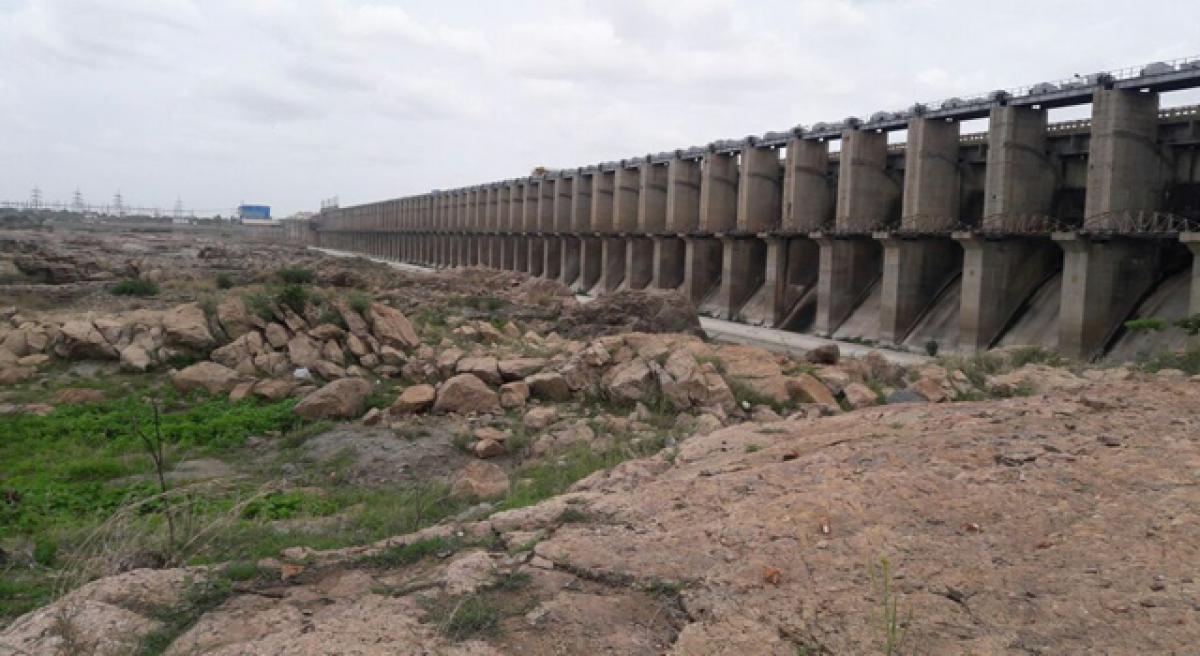Live
- A feast of music, dance and drama
- Mohan Babu denies absconding amid legal controversy
- Swift City to boost industrial growth in Bengaluru
- Allu Arjun walks out free after spending night in jail
- Congress harbours no grudge against any actor: TPCC chief
- Allu Arjun meets Upendra after release from prison, wishes for his ‘UI’ film
- Government Launches Uniform Diet Plan to Boost Student Health and Education
- Robust Security Arrangements for TSPSC Group-2 Exams in Jogulamba Gadwal
- National Lok Adalat Resolves 3387 Cases at Alampur Court
- ‘Get Set, Grow Summit 2024’ Focuses on Digital Detox for Families
Just In

With the river Godavari receiving heavy inflows, the irrigation projects in the two Telugu States are full to the brim, following the recent widespread rain which paralysed normal life.
Mahbubnagar: With the river Godavari receiving heavy inflows, the irrigation projects in the two Telugu States are full to the brim, following the recent widespread rain which paralysed normal life.
However, there is no such situation in Krishna river, despite the fact that a fortnight is over after the monsoon season commenced.
This is not surprising since during the last two years the river waters have not moved to the two Telugu States to the desired level.
The Jurala project, which is the first to receive the Krishna water during the monsoon, is presenting a depressing sight with no floods.
The project usually receives heavy inflows either in the last week of June or during July when the Almatti and Narayanpur projects in neighbouring Karnataka become full. Only then the Krishna water is released downstream.
Although some water from Narayanpur dam has been released it will take at least five days to reach the Jurala project. The Almatti project is yet to receive good inflows.
Its inflow is now only 1.27 lakh cusecs and level stands at 54 tmcft, as against the full capacity of 127 tmcft. It still requires 73 tmcft to become full. Only after the Almatti project touches the optimum level the Narayanpur dam receives inflows.
The Narayanpur dam has only 13 tmfct, as against its full capacity of 32.70 tmcft. It is only when both these projects reach full level water is released into Jurala.
It appears that farmers have to wait for 15-20 days for the Jurala project to receive heavy inflows.
In the absence of such a scenario the rain deficit/drought conditions which prevailed last year are likely to be repeated.
Farmers covered by the Jurala ayacut planned to raising paddy in 1.02 lakh acres were enthused by the early rain in the last week of June. They got paddy beds ready hoping that there would be floods in the Krishna river and water would be released from the Jurala lift and right canals.
This does not appear to be possible now, as the present available water of 314 tmcft is unlikely to be made available now. As such farmers of Nandimala villager in Atmakur mandal are facing anxious moments during the early kharif season, as they would have to suffer losses.
The Jurala project officials have no information till date about the likely inflows from the upstream areas. They are hoping to receive heavy flood water from the Almatti and Narayanpur dams. They say it will take at least 10 days for this to happen.
If no Almatti and Narayanpur flood water is received it won’t be possible to make available the Jurala water to farmers, Executive Engineer Sridhar told The Hans India.
By: Narender Chary

© 2024 Hyderabad Media House Limited/The Hans India. All rights reserved. Powered by hocalwire.com







